Read Our Blogs
The Science and Magic of Fall at Virginia State Parks
If you're curious like me, it's hard not to stop and think about the fall leaves at some point. Why do they change? Is there a reason for the beautiful mosaic of colors? It gets pretty complicated, but here's a little bit of the science and magic of fall.
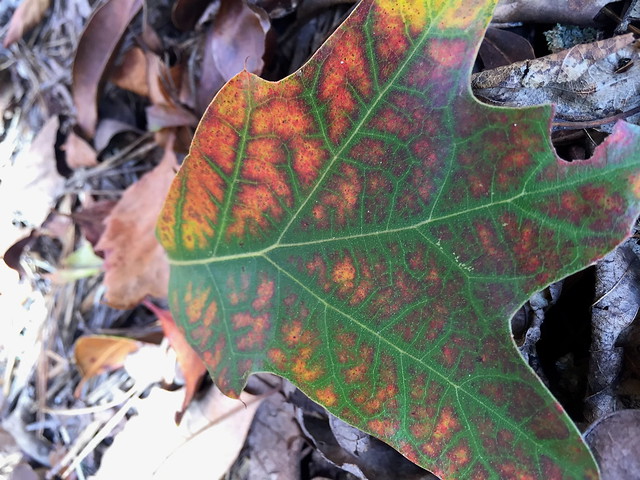
Venation of oak leaf revealed in fall.
Leaves and other plants transform simple ingredients into the foundational strands of our web of life. Leaves are akin to nature's food factories, converting sunlight, water, and carbon dioxide into sugar and oxygen. Chlorophyll absorbs sunlight and is essential in this life-giving process of photosynthesis.
Chlorophyll makes plants green; its rough Greek translation means "green leaf." The funny thing about chlorophyll is that it masks a leaf's true colors, overpowering the mix of pigments during spring and summer.
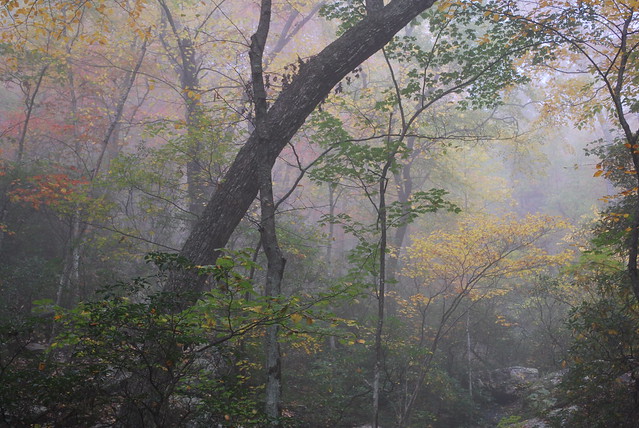
A foggy morning in Douthat State Park as fall gets underway.
During the summer, trees produce more sugar than needed at that moment and store some as starches. Throughout winter, trees live off of sugar and starch they made during the summer. Consider it their version of hibernating. (This focuses on deciduous trees, as opposed to evergreens like pines, mountain laurels, and rhododendrons which hold their leaves all year long.)
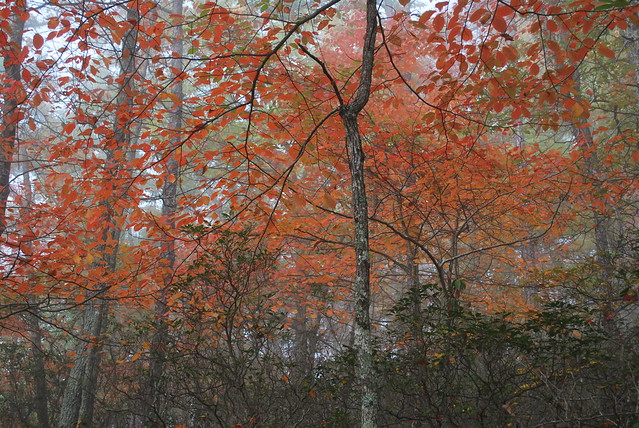
Notice the contrast between the evergreens below and the deciduous above
After the summer solstice, the days start getting shorter and nights get longer. Some plants are very sensitive to the changing ratio of light and dark. This triggers a change, an alarm to prepare for shorter days, the cold, less available water, and the indirect sunlight of winter.
As photosynthesis takes a break for winter and chlorophyll production winds down, that green pigment stops, so yellow and orange pigments that have been there all along finally take center stage. These other colors are revealed. And a grand unveiling it is.
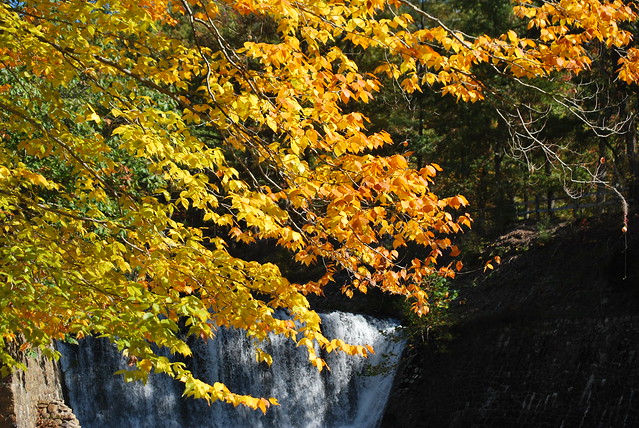
Yellow colors are revealed as photosynthesis for this tree takes a break for winter.
Red and purple colors are made during fall. Like a cookbook recipe, sunlight and chilly nights in autumn result in some sugars in the leaves turning red. The red pigment may help keep leaves on a little longer, enabling the pumping of a few more resources inwards before the leaves twirl and swirl down to the ground.
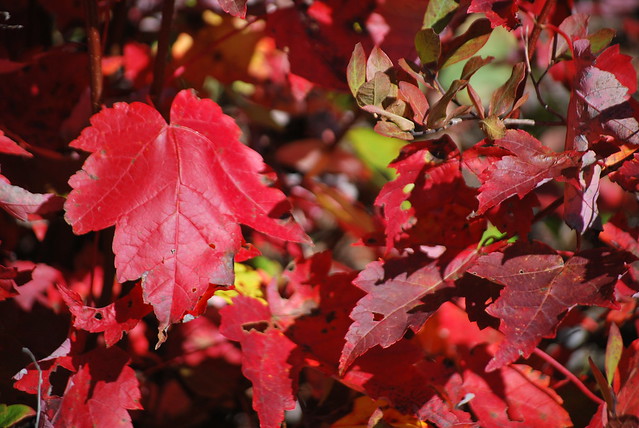
Red maple leaves earn their name in autumn.
If the fall season is too cloudy, we often don't see the intense reds, crimsons, and purples that sometimes bespeckle the hillsides and mountains. Every year is different, depending on climatic and environmental factors.
You can see the slow change of colors draining down the mountainside from afar over weeks.
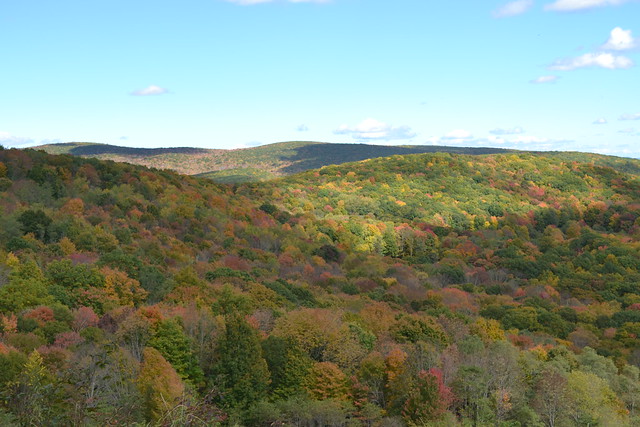
Mountainsides speckled with fall colors from Grayson Highlands State Park
Up close, you can see the slow change in the venation, the patterns of veins as color morphs and drains down the branching patterns.
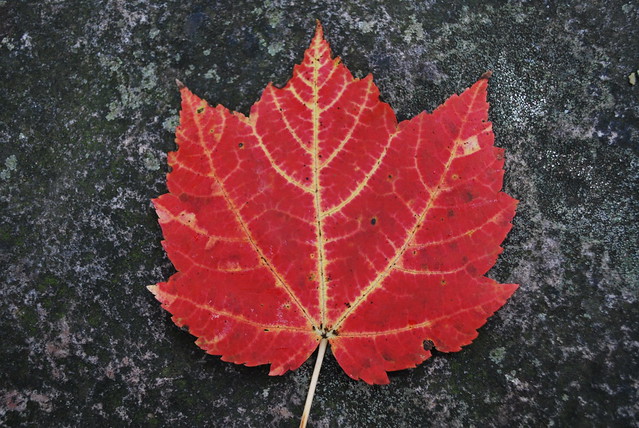
A fallen red maple leaf - it's easy to observe the patterns of the leaf's veins.
There's something magical about this time of year. It's hard not to be awe-inspired when you see the countless colors and hues of autumn. The smell and crunch of leaves on the ground transport me back to many fine memories. I get lost in the shades of peach, mustard, yellow, crimson, orange, purple, and too many others to list.
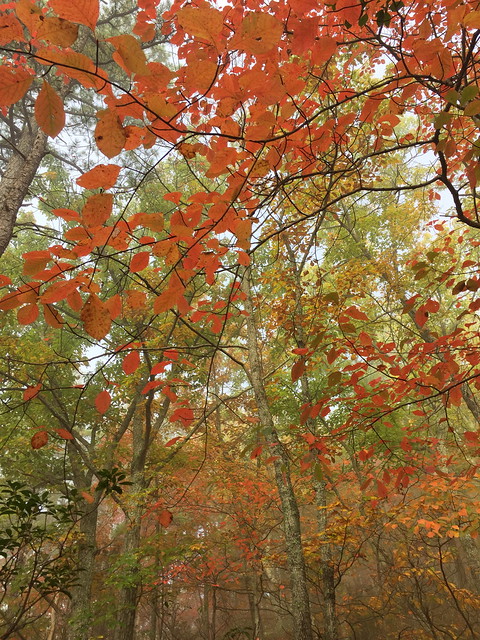
Countless shades of colors on a Douthat State Park trail.
In our neck of the woods, the eastern US is considered one of the best places to view the fall leaves. I love watching the fall color creep down the mountains from the top down, giant autumnal waves across elevation and landscape. The fall show is underway—what a special place we inhabit, and what a special time to enjoy it. Get outside and let your eyes and heart be swept away. Fall is one of the most fantastical times of the year, get out there and enjoy it.
There is an unspoken magic rustling through autumn, glittering leaves revealing countless colors, the chemistry of life preparing for winter, little candles of magic waving from tree branches and fern and vine. As if a little bit of that stored sunlight somehow shines out from the leaves. It's as if the whole world was set ablaze in vibrancy. Autumn reveals the magic of science, the magic of life, a mosaic of beauty only nature could conjure. The promise of starting afresh. The beauty of letting go.
See the fall foliage report to find the conditions in Virginia State Parks this fall.
If you have read the article and have a question, please email nancy.heltman@dcr.virginia.gov.














